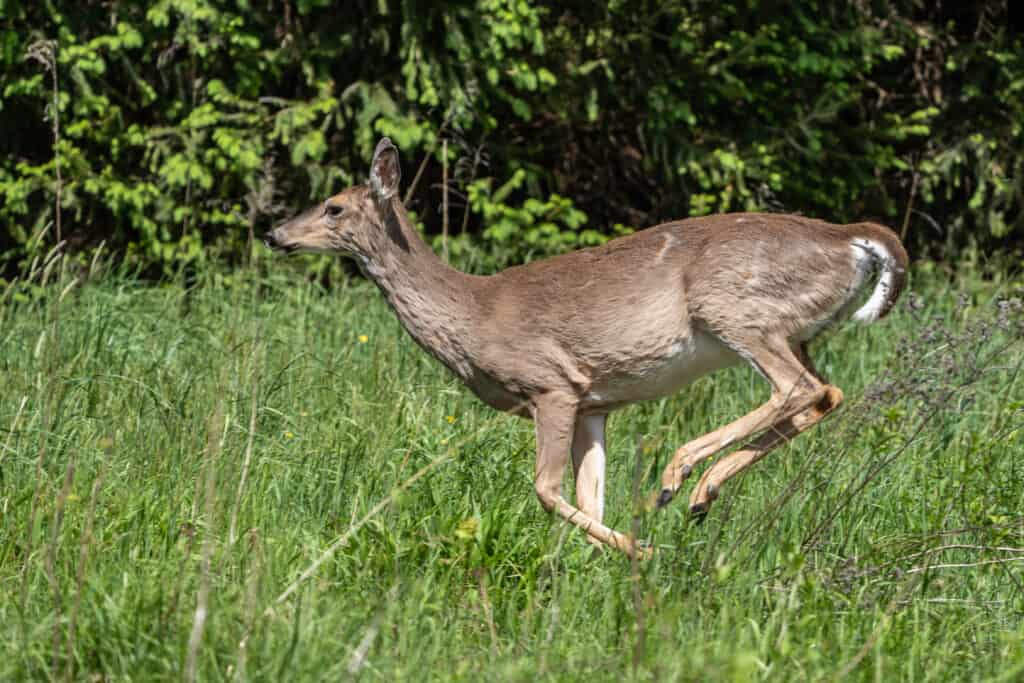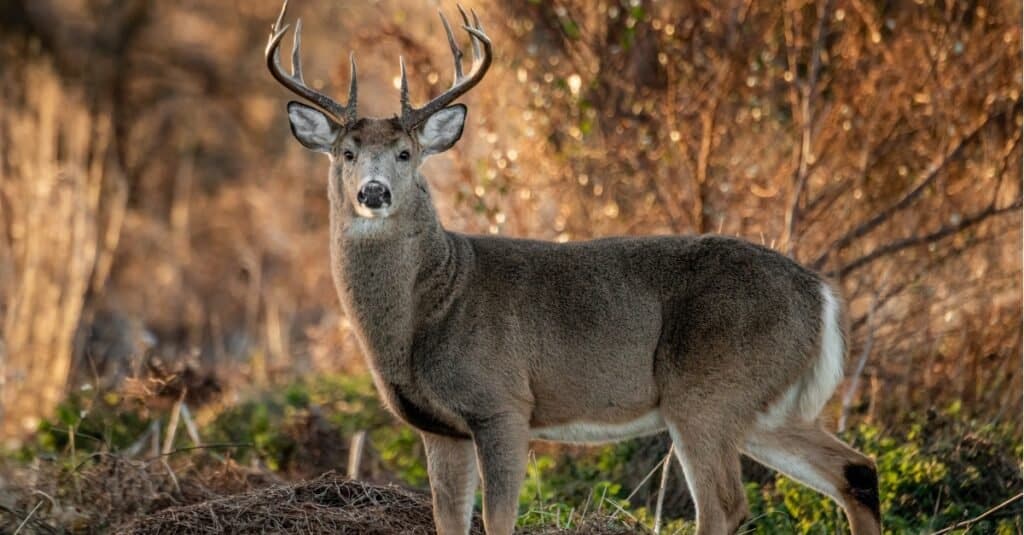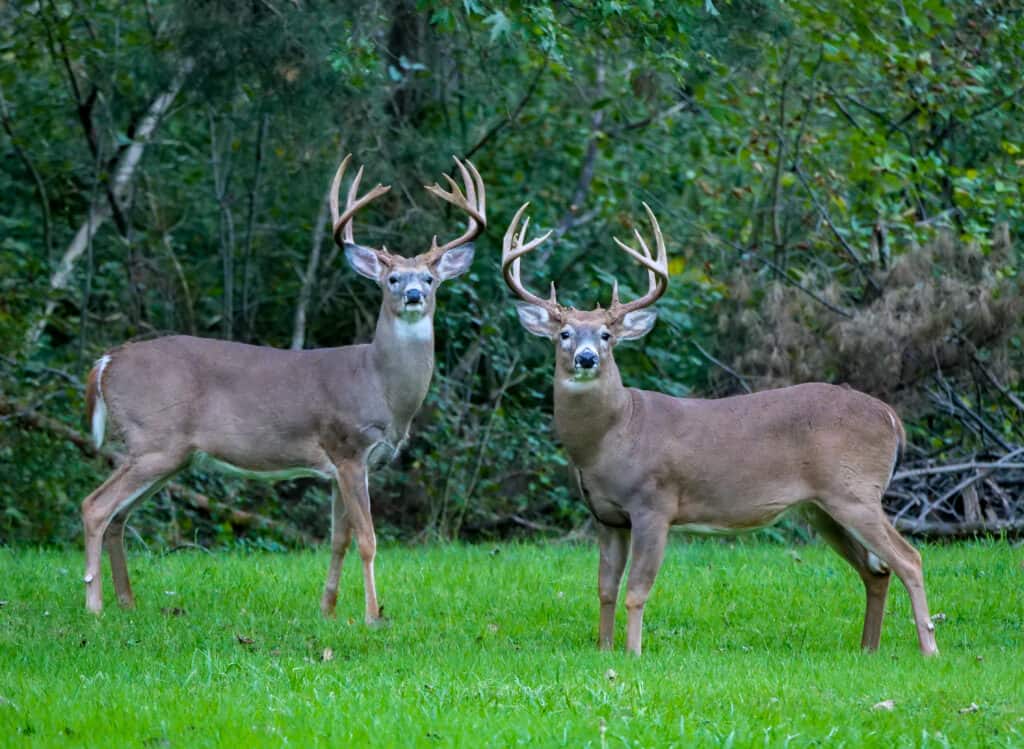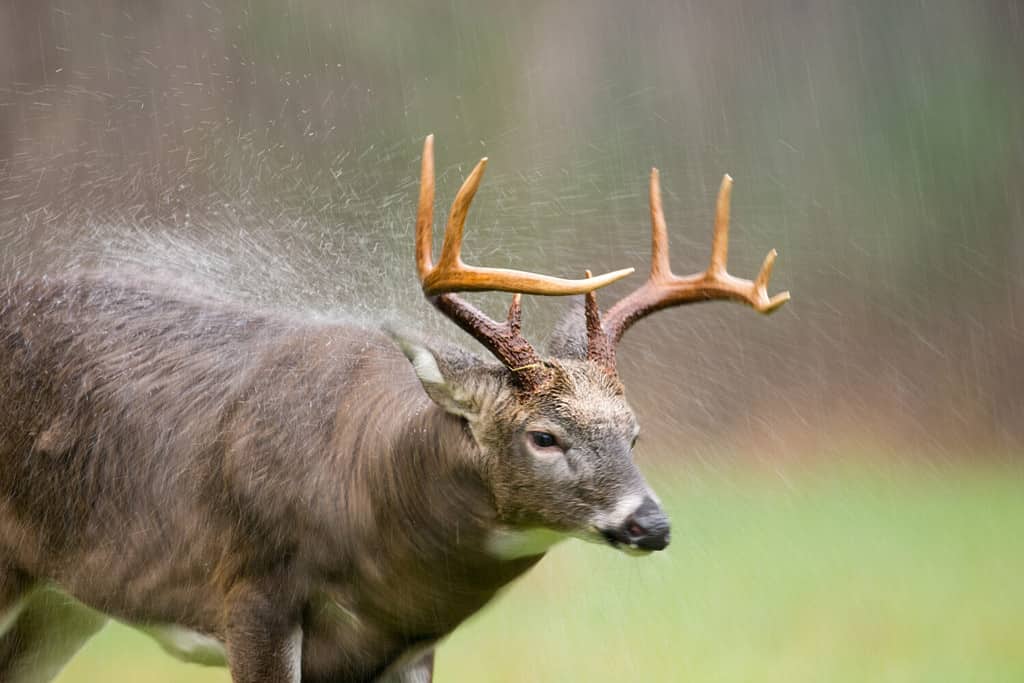Key Points:
- The U.S. state of Washington is home to approximately 100,000 white-tailed deer.
- Large white-tailed deer populations can cause damage to crops as well as pose a hazard to vehicles and drivers. This is one reason that states allow the hunting of these animals.
- Rather than judge the quality of catches by weight, hunters use a unique point system, judging the tines of a white-tailed deer‘s antlers to record size.
White-tailed deer populations are soaring throughout the country, and the U.S. state of Washington is no exception. In 2005, there were around 30 million white-tailed deer in the United States, and they significantly impact vegetation and plant diversity. In some areas, their foraging is responsible for clearing the path for invasive species. The presence of large deer populations also may lead to the spread of diseases, especially tick-borne illnesses, which can impact humans. For these reasons and others, states and the federal government regulate hunting to cull the deer population.
Hunters have taken this opportunity to compete for state and world records. Read on to learn more about white-tailed deer, including the largest ones caught in Washington.

About White-Tailed Deer
Habitat and Behavior
White-tailed deer are abundant in Washington, preferring wooded areas along valley floors, rivers, and the edges of forests. If overpopulation occurs, food scarcity can result in starvation. Predation normally controls the population, and deer have many natural predators. However, due to development pushing out and depopulating predators, humans and dogs are now the main predators of white-tailed deer. Hunting is prohibited in many cities and suburban communities, allowing deer populations to thrive unchecked. In rural communities, on the other hand, deer populations are better controlled through hunting practices.
White-tailed deer are primarily nocturnal, tending to feed at dusk and dawn, though they may be seen during the day. When alarmed, they raise the white underside of their tails, which is how they get their name, before running off at speeds of up to 40 miles per hour.

White-tailed deer can reach up to 40 miles per hour in short bursts.
©Amy Lutz/Shutterstock.com
Diet
White-tailed deer are herbivores, hence their impact on vegetation when their populations are large. They graze on available plants according to climate, location, and season. As ruminants with multiple stomach compartments, they can digest twigs, leaves, grass, fruits, nuts, and other plant matter. They prefer green plants in spring and summer, such as leaves and grass. In autumn, they will feed on corn and nuts. During winter, they have less to feed on, but they will make do with twigs and the growth of woody plants.

In winter, white-tailed
deer feed
on twigs and woody plants.
©iStock.com/steverts
Appearance and Size
In winter, the coats of white-tailed deer are grayish brown, and they change to tan or brown by the summer, with patches of white, especially on the underside of their bodies. Male deer (bucks) grow antlers to fight with other males and defend against predators. The white-tailed deer varies in size, sometimes according to climate — they tend to be larger in colder climates. Male deer typically top out at 250 pounds and stand 36-42 inches at the shoulder, though some large bucks have weighed up to 400 pounds. Female deer (does) can weigh up to around 150 pounds, reaching up to 42 inches at the shoulder.

A buck can grow as large as 400 pounds.
©iStock.com/Harry Collins
White-Tailed Deer in Washington
In the state of Washington, most of the white-tailed deer population is in the northeast, providing significant cultural and economic benefits to Native Americans and the state’s citizens. From 2001 to 2008, hunters harvested an average of nearly 14,000 white-tailed deer each year in Washington. Their numbers also fluctuate due to disease and habitat conditions. Deforestation caused by fire, disease, or insect activity provides the type of growth and conditions ideal for white-tailed deer.
The Largest White-Tailed Deer Caught in Washington
It used to be that the size of a deer was measured by weight. Today, though, deer catches are measured according to a points system. Judges will rate bagged deer according to measurements made at points of the deer’s antlers — meaning, of course, that does are automatically disqualified from record contention. Catches are either listed as typical or non-typical: non-typical deer are those whose antlers are asymmetrical or flawed. The minimum points score for listing in the record books is 170.
The record for the largest typical white-tailed buck in Washington has a score of 200⅜, held by James Cartwright, who shot the buck in Stevens County, WA, in 1992. After Cartwright shot the buck, it ran away, breaking off its left antler before he caught it. At that time, broken antlers were not accepted for game records consideration. Years later, the rule was changed, and Cartwright’s buck became the official Washington record.
The largest non-typical white-tailed deer was taken by an unknown hunter in 1946, scored 242⁴∕₈ and is now owned by Bass Pro Shops.

White-tailed deer are judged by their antlers’ size and quality when hunting.
©iStock.com/Ralph Navarro

Deer catches are measured according to a points system.
©Tony Campbell/Shutterstock.com
The Largest White-Tailed Deer Caught in the World
Canadian bowhunter John Annett of Ontario established the record for the largest white-tailed deer. The buck was shot in 1977, before the points system, and the catch was measured by weight. Field dressed, it weighed 431 pounds, meaning it probably weighed more than 540 pounds when shot. Since it was judged by weight, the typical/non-typical designation has little meaning here.
Summary
Washington is home to a large population of white-tailed deer, and due to the lack of predators, it needs to be periodically culled to protect the rest of the ecosystem. Hunting is encouraged by the state government to this end. The competitive nature of hunters ensures that records will be kept regarding the size of white-tailed deer caught, and because of this, we know that the largest typical white-tailed deer had a score of 200⅜, and the largest non-typical deer scored 242⁴∕₈.
The photo featured at the top of this post is © iStock.com/EEI_Tony
Thank you for reading! Have some feedback for us? Contact the AZ Animals editorial team.







